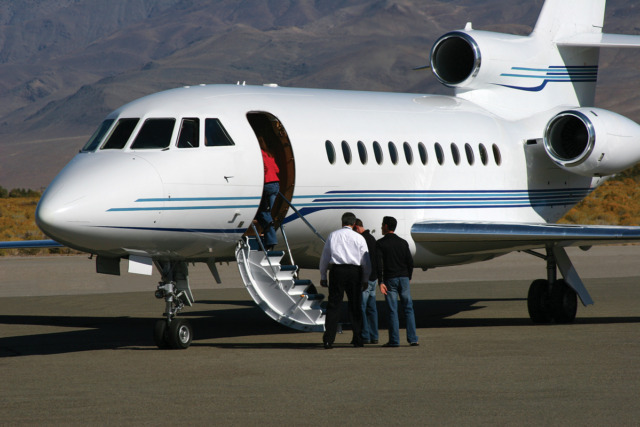
Virtually all air travel ground to a halt in mid-March in response to the pandemic. As scientists learned more about the virus and its method of transmission (primarily by exhaled aerosol droplets), travelers slowly began flying again.
But not on commercial airlines. Studies estimate that commercial air travel requires anywhere from 150 to more than 1,000 personal interactions with others from leaving home to arrival, including ground transportation, security check-in, airport workers, flight personnel, and other passengers.
These days, who wants to take that risk unnecessarily?
To lower expenses in the face of severely reduced revenue, airlines cut flight frequency, cities served, and seats available per flight, making air travel even less convenient. Today, “you can’t get there from here” applies to an ever-increasing number of destinations.
In response, those who have the means to do so are far more likely to charter, encountering perhaps only six other people, including the flight crew. Mirroring airline travel, after an initial drop in March, business aircraft flights rebounded in April with an unexpected surge.
Regular business aircraft users began flying again, at first to bring home remote family members to quarantine, and then for some occasional business travel. By June, while all business aircraft flying remained 25% below June of last year, it was up 40% over May, according to aviation intelligence company Argus International. Charter experienced the greatest jump: more than 43%.
That trend continued through July, as all flying rose another 9.4% over June, with charter up an additional 12.3%.
By mid-August, while commercial airline traffic remained more than 46% below August 2019, worldwide business aircraft flight activity was back to within 15% of 2019 activity levels, according to aviation data and software company FlightAware.
Part of that recovery is understandable. As an owner, you understand the convenience and reduced risk exposure that business aircraft flying offers.
The startling part is the sheer number of first-time business aircraft charterers who have begun flying since April. The initial surge in demand has been for light to midsize jet trips, not surprising as many of those trips were personal, moving family members to safety. But, as commercial airlines continue to cut cities served, and lay off flight personnel, the demand for nonstop transcontinental and intercontinental travel should also rebound.
What does this influx of new charter users mean for aircraft owners? While you may have curtailed your own flying in the past few months, others do have to, and will continue to, travel both for business and personal reasons.
So, regardless of its size and range capability, if your managed aircraft is among the more than 8,800 turbine aircraft available for charter in the US alone, you already may be seeing a growing demand, and can look forward to increased revenue opportunities.
Charter is the easiest point of entry to corporate aviation, as more and more new users are discovering. Clients can try one or more aircraft makes and models, to determine their best match. Having identified their preference(s), they may move to a prepaid card program offering those models, and eventually to a fractional share or aircraft purchase.
That predictable pattern has held steady during the 50+ year history of jet charter. Once new users experience the convenience, time savings – and now the health advantages – of charter, they tend to continue to use it.
So while your aircraft may have sat idle for a couple of months while you wondered what the world situation would bring, the call for charter is now up exponentially. That means the value of your aircraft will continue to be maintained, since there will be demand for it when the time comes for you to sell or trade. And in an uncertain world, that is a bit of good news for you indeed. BAA
Business Aviation Advisor's content is presented by experts in all aspects of aircraft management: professionals knowledgeable in operations, legal and regulatory issues, insurance, aircraft finance, human resources, aviation real estate, charter and charter brokers, safety management providers and auditors, and third-party as well as owner aircraft management. These authorities provide Business Aviation Advisor readers with the most current and pertinent information they need to make the most effective and informed decisions about their business aviation investments.




